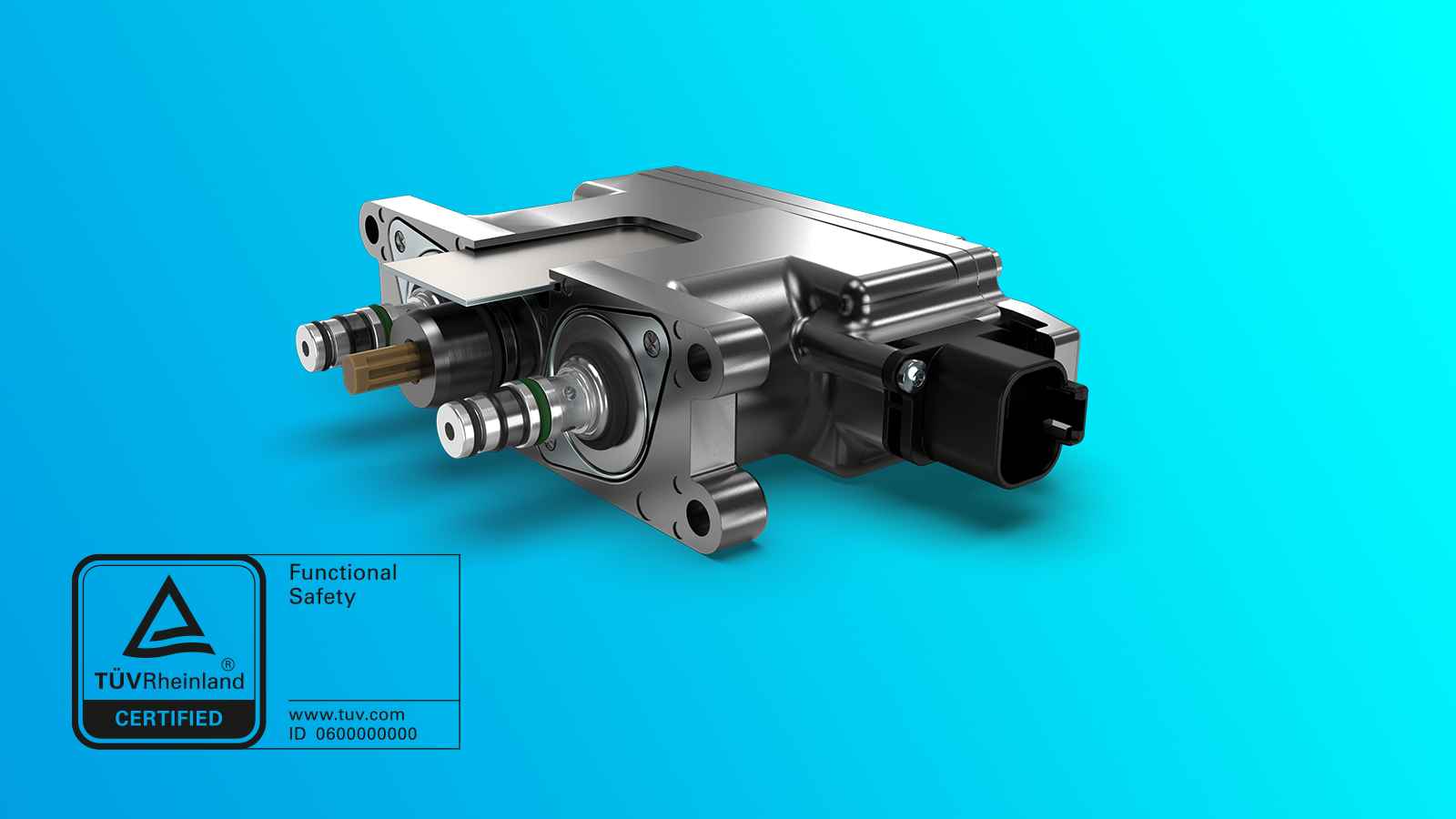
(Sponsored Content) – The Thomas EHA 2.0 Fail-Safe electrohydraulic actuator is a compact, CANbus-based solution designed for seamless integration into safety-critical motion control systems. Engineered for high reliability and efficiency, it features a redundant stroke feedback sensor and a hydraulically fail-safe pilot valve. Together, these safety elements enable compliance with Performance Level PL = d, as defined by DIN EN ISO 13849. Integrated error diagnostics and rapid software configurability further enhance the actuator’s flexibility.
The EHA 2.0 Fail-Safe from Thomas ensures, within the scope of its technical specification, that a safe operating state is initiated even in the event of mechanical faults in the hydraulic part of the machine. TÜV Rheinland certification attests to the functional safety of this device, opening up a wide range of potential applications up to a class d performance level [1].
X-by-wire: High level of fail-safety for steering and brakes
In use, the sensor technology in the EHA 2.0 Fail-Safe enables precise control and monitoring of the position of the main slide. Thanks to digital control, the operator can conveniently call up the status of the actuator and thus retain control of the work processes. The system reliably detects faults and helps to maintain safe operations, for example, stopping a crane arm to prevent an uncontrolled change in position.
The EHA 2.0 Fail-Safe plays a key role in these applications. In addition to providing electronic safety, it also ensures that the pilot pressure is essentially reduced to zero (i.e., the hydraulic main stage is depressurized) in the event of hydraulic valve malfunctions.
With the system designed to eliminate hazardous situations, Thomas can make an effective contribution to accident prevention. The Fail-Safe function of the valve according to specification can be seen in more detail here:
Advantages: more efficiency, higher safety
The EHA 2.0 Fail-Safe also offers significant benefits in financial terms: The single-channel control of hydraulic main stages in applications that place higher safety demands on the hydraulics means that redundant products can be eliminated to some extent, thus improving the overall cost-effectiveness of the machine. In addition to highlighting EHA 2.0 Fail-Safe’s benefits when it comes to addressing the issue of contamination caused by the environment in which heavy-duty machinery is used, the examples below demonstrate how the EHA 2.0 Fail-Safe can improve operational safety in various fields of application:
[1] Performance Level d
The performance level in the ratings a to e is a measure of the ability of a component to perform a safety function under foreseeable conditions. The functional safety of the EHA 2.0 Fail-Safe is applicable up to performance level PL=d in accordance with DIN EN ISO 13849.
Performance level d forms an essential basis for the safety-related implementation of independent machine functions.